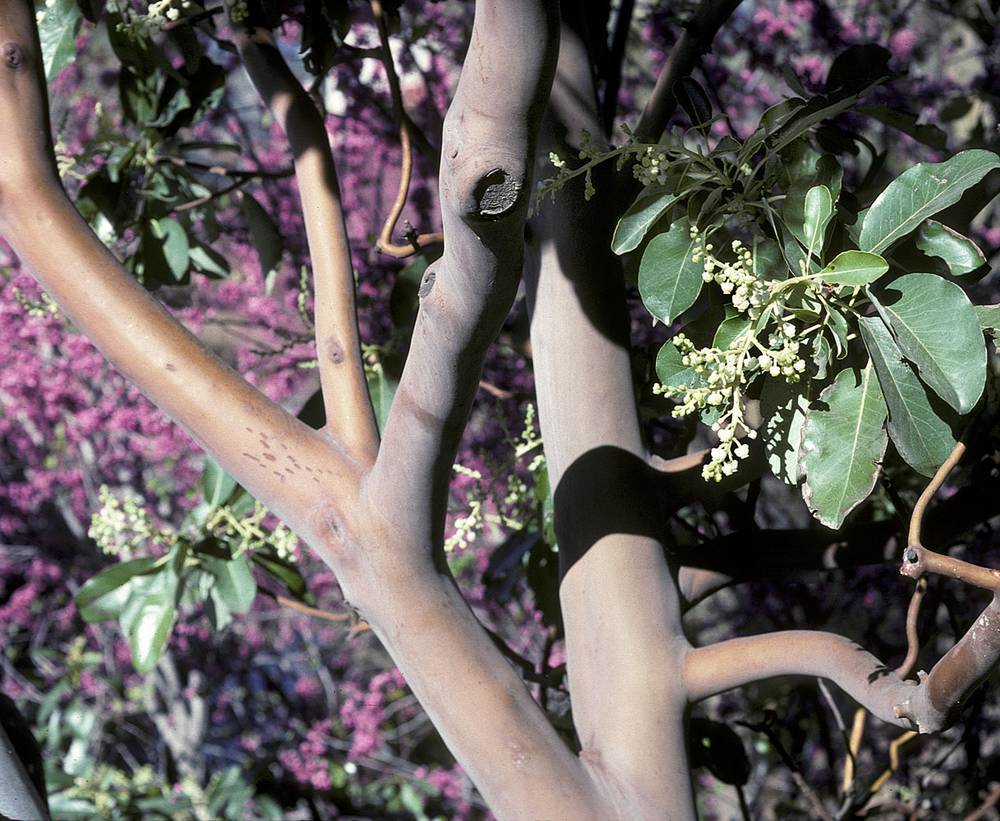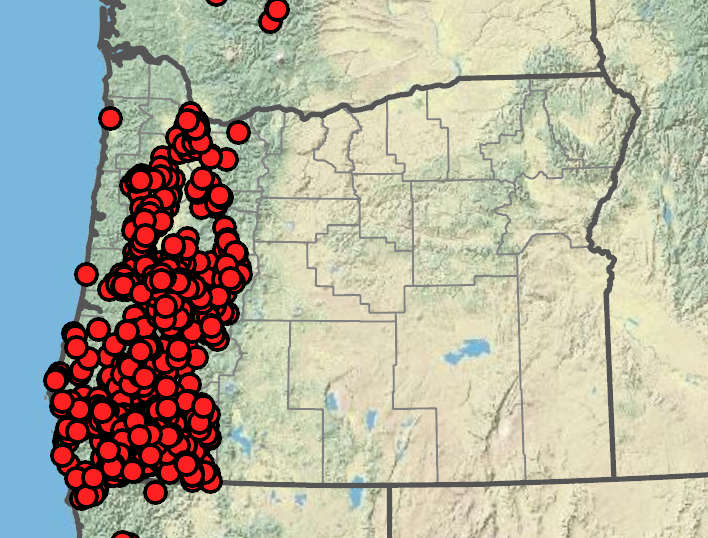Arbutus menziesii
Pacific madrone
ovate to elliptic, 7–15 cm, pale green abaxially, dark green and shiny adaxially;
margins entire to minutely serrate;
petioles 1–2.5 cm.
5–15 cm, pubescent;
bracts ovate, 4–6 mm; whitish.
sepals ovate, 0.5–1.5 mm; thin;
corollas urceolate, 5–8 mm, white to pinkish;
lobes very short, reflexed.
globose, 8–12 mm in diameter, orange to bright red, roughened by glandular-warty projections.
2–3 mm, light brown.
=26.
Arbutus menziesii
Coniferous and mixed forests, rocky meadows. Flowering Mar–Jun. 0–1600 m. Casc, CR, Sisk, WV. CA, WA; north to British Columbia. Native.
The largest of the ericaceous species in Oregon, Arbutus menziesii is easily identifiable by its size and exfoliating bark. This tree is popular in cultivation throughout the Northwest and is often seen in parks and gardens. Native Americans found a variety of uses for the fruits, bark, and leaves. Its fragrant flowers and brightly colored fruit are attractive to wildlife as well.
Stephen Meyers
- Local floras:
BC,
CA,
OR,
WA
- Local Web sites:
CalFlora,
CalPhotos,
Flora NW,
PNW Herbaria
WildflowerSearch
iNaturalist (observations)
USDA Plants Database
- LBJ Wildflower Center
- SEINet
- Plants of the World Online
- Encyclopedia of Life
- Wikipedia
- Google Image Search



